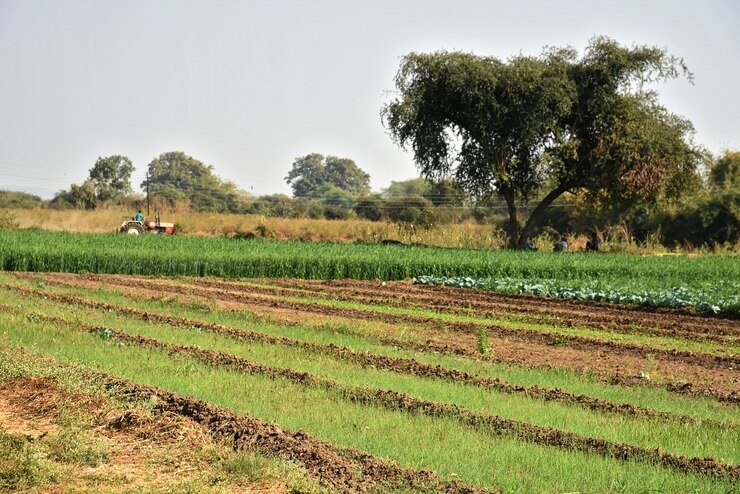Kharif Crop Area Shrinks Across Gujarat
22-Jul-2025 11:12 AM

Ahmedabad. The distribution of monsoon rains has been uneven this season in Gujarat. While some districts have received heavy rainfall, others are facing a rain deficit. This disparity has led to a decline in the area under many Kharif crops compared to last year. Gujarat is among the leading producers of groundnut, cotton, and castor in India.
According to the latest data from the state agriculture department, the total area under Kharif crops in Gujarat has decreased by around 4.90 lakh hectares—from 63.28 lakh hectares last year to 58.39 lakh hectares this season.
The sowing area for paddy and coarse cereals has dropped from 8.35 lakh hectares to 6.88 lakh hectares. The area under pulses has decreased from 2.54 lakh hectares to 1.94 lakh hectares, while the cotton sowing area has fallen from 22.34 lakh hectares to 19.62 lakh hectares.
However, oilseed crops have seen an increase, with the total area rising from 21.62 lakh hectares to 22.48 lakh hectares. The area under Guar has also improved from 31,000 hectares to 41,000 hectares.
Compared to the previous Kharif season, the paddy cultivation area has declined from 4.15 lakh hectares to 3.42 lakh hectares. The area under millet has decreased from 1.28 lakh hectares to 1.24 lakh hectares, sorghum has reduced sharply from 13,000 hectares to 3,000 hectares, and maize area has fallen from 2.75 lakh hectares to 2.19 lakh hectares.
In pulse crops, Arhar (Tuvar) has declined from 1.70 lakh hectares to 1.17 lakh hectares, and Urad from 50,000 hectares to 39,000 hectares. However, Moong has seen a slight improvement—from 27,000 hectares to 33,000 hectares.
Sowing of oilseed crops has progressed, led by groundnut and castor. Groundnut area has increased from 18.28 lakh hectares to 19.42 lakh hectares, castor has jumped from 23,000 hectares to 55,000 hectares, and sesame has improved slightly from 25,600 hectares to 25,900 hectares. In contrast, soybean area has declined from 2.86 lakh hectares to 2.25 lakh hectares.
In districts where fields are currently waterlogged, sowing may resume once the land dries.
